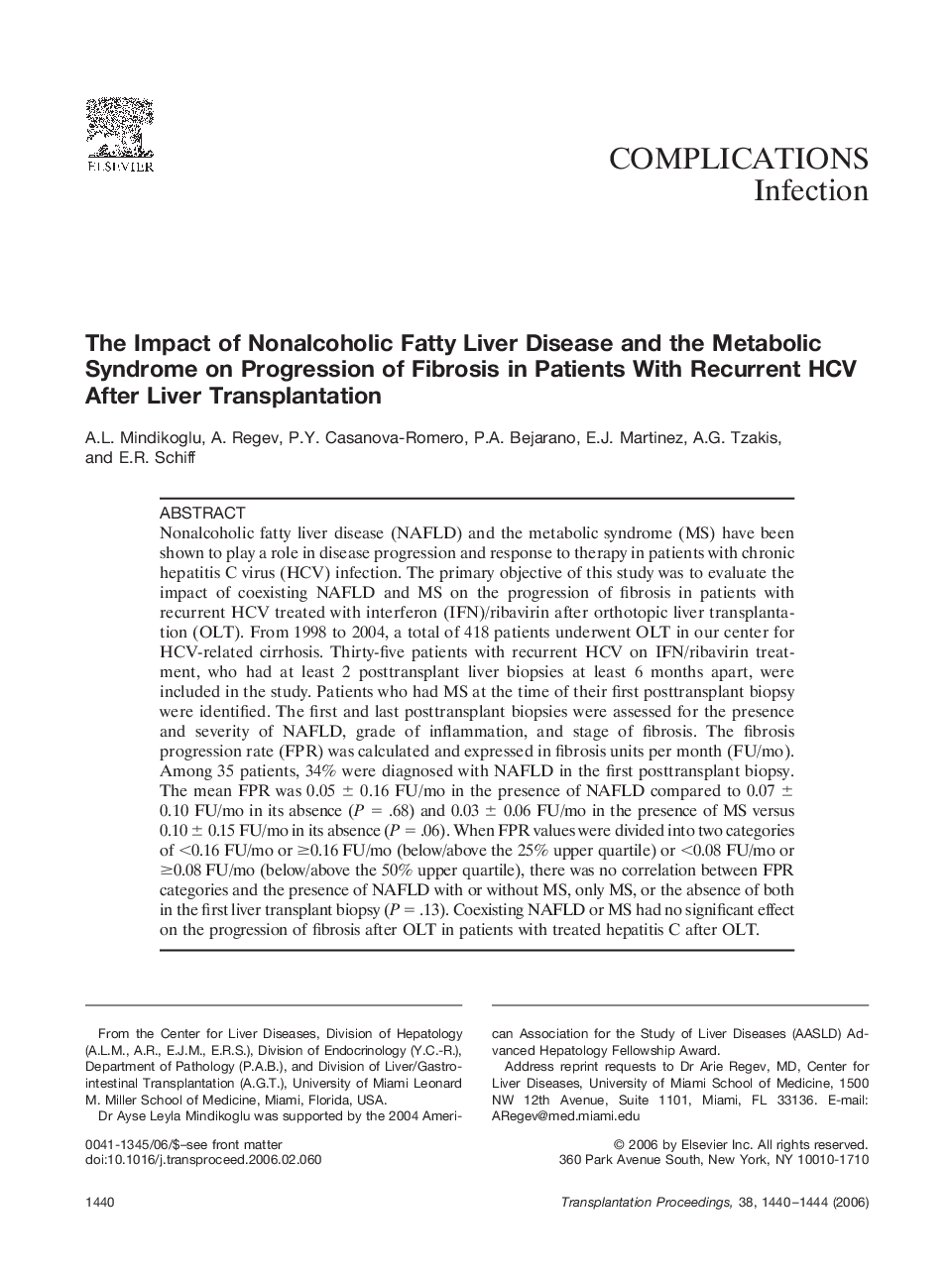| Article ID | Journal | Published Year | Pages | File Type |
|---|---|---|---|---|
| 4263460 | Transplantation Proceedings | 2006 | 5 Pages |
Nonalcoholic fatty liver disease (NAFLD) and the metabolic syndrome (MS) have been shown to play a role in disease progression and response to therapy in patients with chronic hepatitis C virus (HCV) infection. The primary objective of this study was to evaluate the impact of coexisting NAFLD and MS on the progression of fibrosis in patients with recurrent HCV treated with interferon (IFN)/ribavirin after orthotopic liver transplantation (OLT). From 1998 to 2004, a total of 418 patients underwent OLT in our center for HCV-related cirrhosis. Thirty-five patients with recurrent HCV on IFN/ribavirin treatment, who had at least 2 posttransplant liver biopsies at least 6 months apart, were included in the study. Patients who had MS at the time of their first posttransplant biopsy were identified. The first and last posttransplant biopsies were assessed for the presence and severity of NAFLD, grade of inflammation, and stage of fibrosis. The fibrosis progression rate (FPR) was calculated and expressed in fibrosis units per month (FU/mo). Among 35 patients, 34% were diagnosed with NAFLD in the first posttransplant biopsy. The mean FPR was 0.05 ± 0.16 FU/mo in the presence of NAFLD compared to 0.07 ± 0.10 FU/mo in its absence (P = .68) and 0.03 ± 0.06 FU/mo in the presence of MS versus 0.10 ± 0.15 FU/mo in its absence (P = .06). When FPR values were divided into two categories of <0.16 FU/mo or ≥0.16 FU/mo (below/above the 25% upper quartile) or <0.08 FU/mo or ≥0.08 FU/mo (below/above the 50% upper quartile), there was no correlation between FPR categories and the presence of NAFLD with or without MS, only MS, or the absence of both in the first liver transplant biopsy (P = .13). Coexisting NAFLD or MS had no significant effect on the progression of fibrosis after OLT in patients with treated hepatitis C after OLT.
